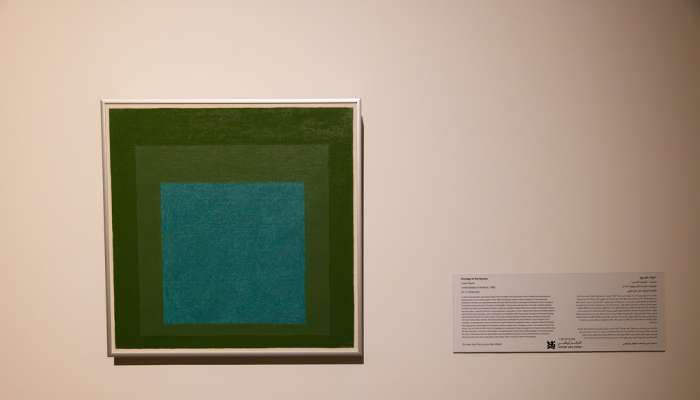The National Museum in Muscat is currently displaying two unique objects on loan from the Louvre Abu Dhabi for one year. These objects include a “Bowl with a Two-colour Inscription” featuring Arabic calligraphy and a “Homage to the Square” reflecting contemporary abstract art. This cultural collaboration between the two museums aims to offer visitors an immersive experience into Islamic art and modern abstraction, showcasing the rich tapestry of art, culture, and history that connects the world.
The “Bowl with a Two-colour Inscription” is showcased in the “Splendours of Islam” gallery and dates back to the Samanid dynasty from the 10th – 11th century. Originating from Khorasan and Transoxiana, regions travelled by the ancient Silk Roads, this bowl is adorned with Arabic proverbs reflecting the wisdom of the Imam Ali bin Abi Talib and Islamic hadith. The contrasting black or brown slip decoration on a white slip base showcases the skill of the calligrapher, enhancing the power of the inscription and the circular composition.
On the other hand, the iconic “Homage to the Square” by Josef Albers is displayed in the “Oman and the World” gallery. Created in 1963, this art piece is a part of Albers’ series that explores color theory and optical effects through nested squares. The series, initiated in the 1950s in the United States, showcases Albers’ contribution to abstract art as a universal language, redefining art’s relationship to reality during the challenges of the twentieth century. The technique used on oil masonite panels highlights subtle textures and spatial depth, making this piece a pivotal study in color dynamics.
The loan of these objects symbolizes the close bilateral collaboration between the National Museum and the Louvre Abu Dhabi, established in 2017. This collaboration began when a collection of Omani artefacts was loaned to the Louvre Abu Dhabi, introducing visitors to the culture of the Land of Frankincense and Oman’s role on the maritime Silk Road. Moreover, the two museums previously collaborated on the “Gardens of Paradise: The Language of Flowers in Iznic Ceramics” exhibition, showcasing Iznik ceramics with special symbols related to Qur’anic descriptions, borrowed from the Louvre Abu Dhabi.
In return, the Louvre Abu Dhabi received loans from the National Museum, including a beautifully crafted Omani dagger from the Al Busaidi dynasty, an intricately designed copper inkwell, and a rare shell-shaped incense burner. This exchange of artefacts between the two museums highlights the mutual respect for each other’s cultures and heritage, promoting a deeper understanding of shared histories. This cultural collaboration not only enriches the museum experience for visitors but also fosters a sense of unity and appreciation for diverse art forms and traditions.
Overall, the loan of these objects from the Louvre Abu Dhabi to the National Museum in Muscat showcases a unique blend of Islamic art and contemporary abstraction, offering visitors a glimpse into the intricate details of Arabic calligraphy and the profound compositions of modern art. This collaborative effort between the two museums not only enriches the cultural landscape of Oman but also strengthens the bonds between nations through the universal language of art.










